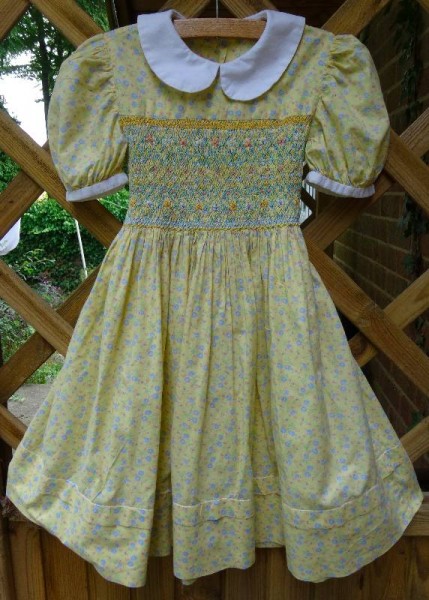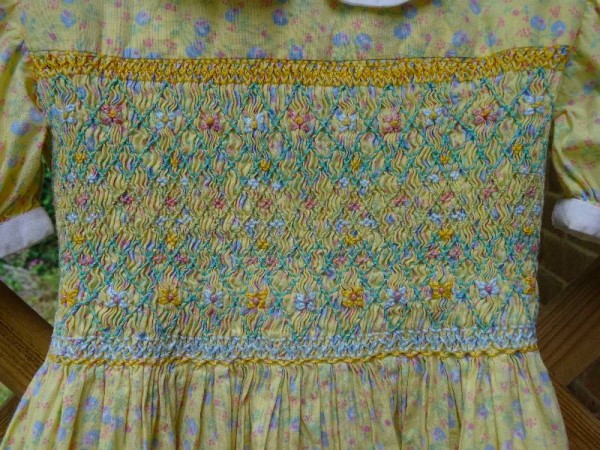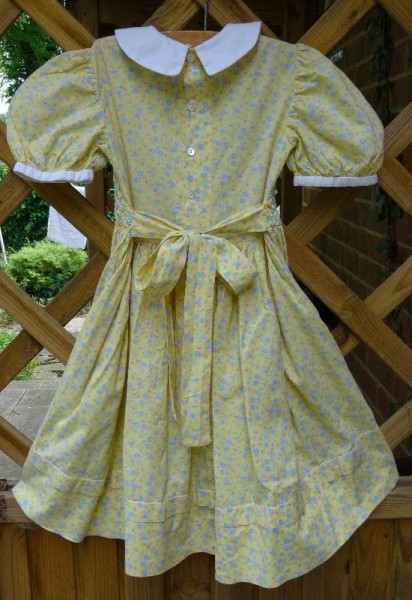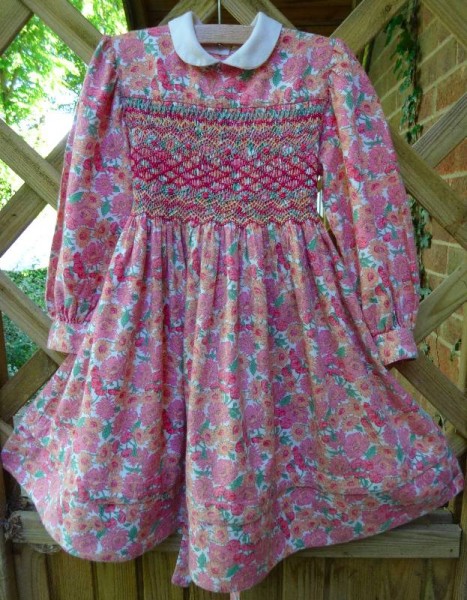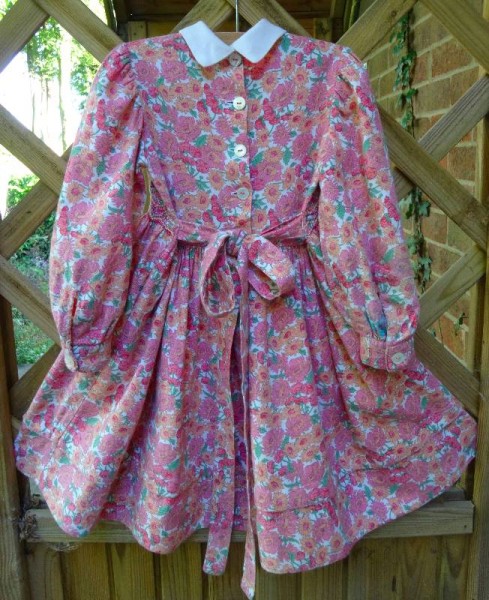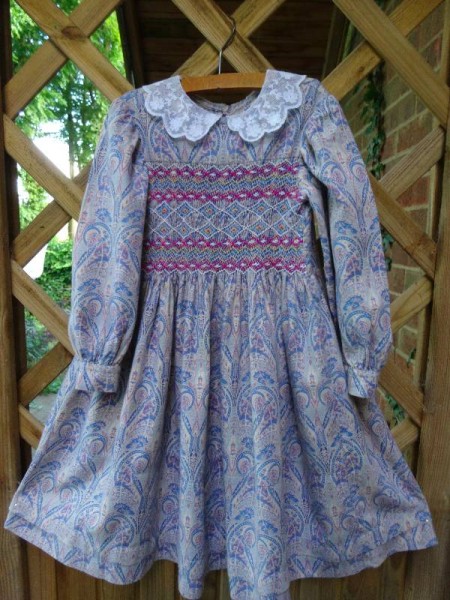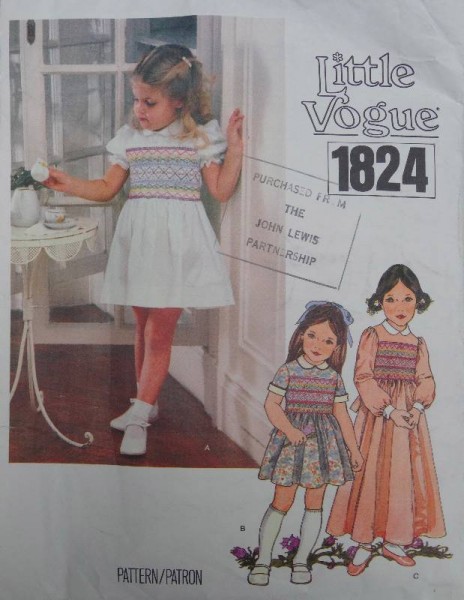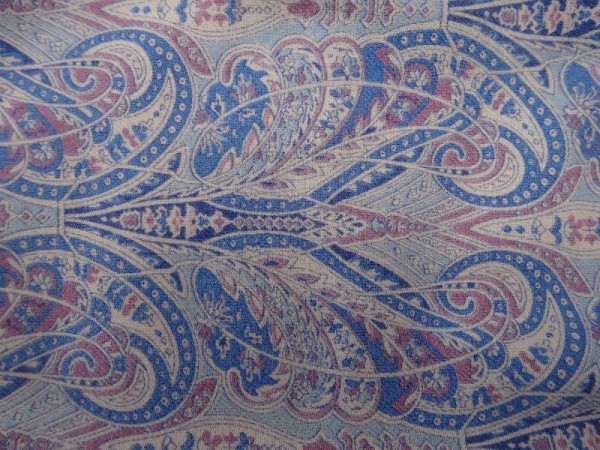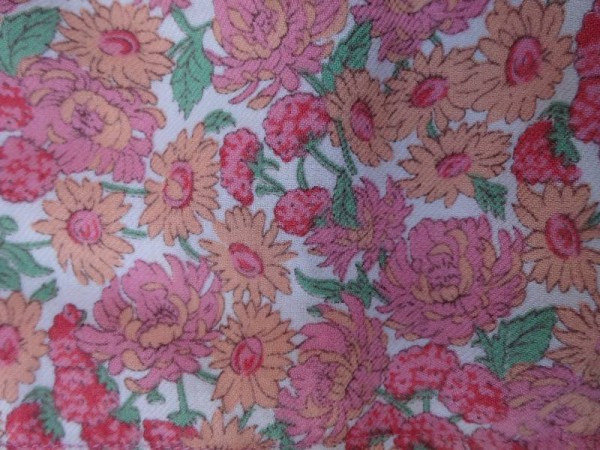Here is another thing ferreted out of trunks in a North Wales barn. This is the short-sleeved summer version of the smocked dress made from the pattern shown in the previous post. The collar and cuffs are in standard weight cotton and they would probably have been better if made from plain white lawn of the same weight at the dress fabric. Needs must, however, and at the time that was the only white I had.
I used a slightly thicker, twisted cotton to do the smocking as that was all I had in the colours I wanted to use. I never thought much about it at the time, so I suppose it must have looked ok but today I think it looks a bit lumpy and, if I were doing it now I would have preferred to use stranded embroidery thread to give it a smoother look.
I’m a bit of a fraud heading this post ‘smocked dresses’ for I never got beyond the smocking in the second of the summer dresses and only recently found all the pieces in the bottom of a pine chest. Now it may as well wait to be finished until a little one of the right age comes along.
As I’m still on nanny duty, I shall publish this post now but later shall add to both this and the previous one close ups of the fabrics which I forgot to photograph before I came to London. In the case of the Liberty prints, I shall then get in touch with Liberty to see whether they know the name of these classic prints.
I was trying to find a few references to heroines of children’s books wearing smocks but exhaustion and diving up blind literary alleys mean the only things I’ve come up with are counter to expectation. To be clear about the use of the term ‘smock’, I refer you back to what I wrote (at some length I’m afraid) here . Smocks might have smocking but they often didn’t. Smocking also came to appear on things like dresses, pinafores, blouses, etc., none of which are quite the same as smocks. You can have one without the other.
Google is very fond of linking searches for smocks/smocked dresses/smocking to Kate Greenaway, the C19th children’s illustrator who liked to depict children living in some paradise at least 50 years before her time and in a place whose reality lay solely in her own mind. If you look carefully at these pictures you’ll be hard pressed to see many smocked dresses, although there are plenty of rural style smocks without smocking, or with what looks like just a row or two of random gathers.
Then I thought of AA Milne, so I searched for images of Christopher Robin as drawn by E.H.Shepherd and blow me if Christopher Robin is often shown wearing a smock and sometimes even one with a hint of smocking. (He is definitely not to be seen in a T shirt and shorts as seen in Disney, although photographs of the child the character is based on show him either in Fairisle jumpers or in complicated shirts with big white collars and a loose floppy tie-like piece of fabric).
Perhaps, after all smocked dresses of the sort I’ve shown were quite a late development, at their most fashionable in the mid C20th. Do this little test – ask women you know who were born between the late 1940s and the late 1950s whether they ever had such a dress (probably white, definitely rosebuds) and further do they have a studio photograph of themselves in it. I have a feeling this was the Sunday best uniform for many a middle class girl and there I suspect you have it – from working agricultural smock to middle-class best in just over a century. Of course 60’s dress designers, like Mary Quant or Biba subverted things even further and smocks became high fashion for the trendy young right across the class spectrum – although it is true you had to be built like Christopher Robin/Twiggy to carry the fashion successfully.
(A late thought: did child star Shirley Temple wear smocked dresses? According to Google images, it seems not. Smocks, yes; smocked dresses, no).
Any thoughts?

